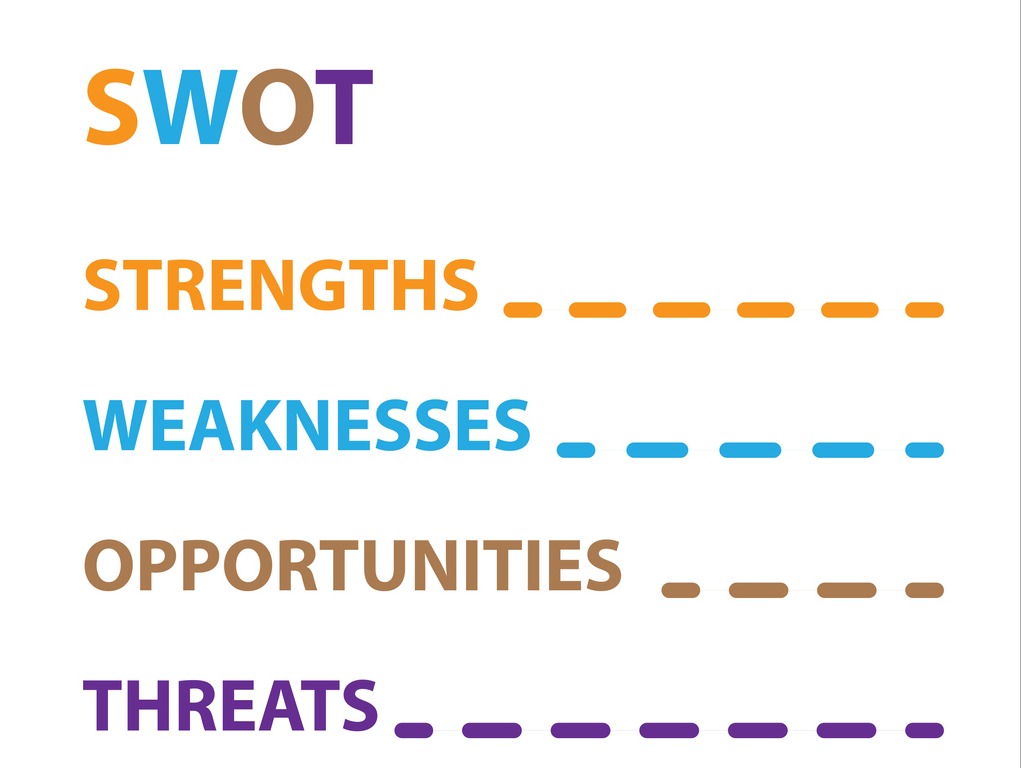Knowing what your main strengths are can be invaluable information when it comes to applying and interviewing for jobs, or if you are planning a career change. Not only can it help you if you are looking to get into a new career and you need a bit of assistance narrowing down your possible career options, but it can also make you feel more confident about yourself when it comes to the interview stage.
Self-analysis isn’t the most enjoyable task for a lot of us, but the results can be invaluable. Below, we’ve outlined a simple way for you to discover your key strengths and how you can best use them:
Conduct a self-SWOT Analysis
SWOT is an acronym which stands for Strengths, Weaknesses, Opportunities and Threats. Using these as acting subheadings, you can look at how your skills can offer new opportunities, as well as assessing how you can overcome any potential hurdles and challenges.
The strengths and opportunities sections will include things you consider favourable and within your control, while weaknesses and threats are external factors that may hinder your progress.
You can use this data to address the correlation between your strengths and weaknesses, how to use your strengths to make the most of your opportunities, how to improve weaknesses so they do not halt your progress and any ways that you can diminish threats.
This data can then be used during interviews, as it is the perfect way of creating talking points with your potential future employer. You should also use the data to update your CV, adding in relevant strengths under your skills section.
Strengths
Think of these as the “key selling points” that will make you stand out from the crowd. Within this section of your analysis, you should talk about your personal characteristics. Some examples of strengths that you may highlight could include:
- Experience with software or product that is relevant to the role
- Strong work ethic
- Good analytics skills
Weaknesses
These are negative areas that you need to improve upon. It is important that you are realistic in this section – as in, don’t fall into the cliché of writing that you “work you too hard” - but be aware of what your weaknesses are. Once the weaknesses have been highlighted, you should address what you are trying to do to turn the weakness into a strength.
- Some questions to ask yourself might include:
- What are your negative work habits and traits?
- What do you think other people see as your weaknesses?
- Does any part of your education or training need improvement in preparation for your new role?
Opportunities
In this section, you need to look at external factors that may aid you when it comes to getting a new job. Some examples of questions that you can ask yourself may include:
- Is the industry growing?
- What is the state of the economy?
- What advancement opportunities exist in the industry?
Threats
Finally, look at any external threats that may hinder you or stop you from achieving your goals when it comes to your career. Consider asking yourself the following:
- Is there a strong competition for the career you are considering?
- What is the biggest external danger to your goals?
- Is your industry taking on new roles?
Assessing the Results
When it comes to looking at the results, there are a couple of ways you can assess your findings. The first is known as matching, where you connect two of the categories to determine what actions you are going to take. For example, if you match a strength to an opportunity, it can show where you can take immediate action. Consequently, if you match a weakness to a threat, it could present areas that you can work or situations that you should avoid.
Your other option is to change your negatives into positives, so you convert your weaknesses into strengths or threats into opportunities. For example, you may notice a gap in your skillset when it comes to a system or software you will need to use in your role, so by seeking out an education in said software or system, you can flip it on its head.
It is important to remain objective, and if possible, consult others who know you for some feedback. If you are willing to move outside your comfort zone, it will help you get the more honest results that will be much more beneficial to your future. The key to writing a good personal SWOT analysis is honesty – be ruthless in revealing faults and weaknesses but also celebrate your personal strengths.
We hope this helps you when it comes to applying for a new job, but if you are struggling with a career decision and would like some help from our team of experts, please contact us and find out how we can help!








